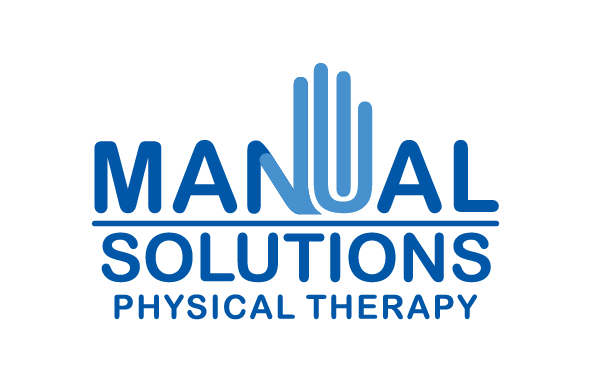Manual Solutions Physical Therapy
What Makes Us Stand Out
What is Manual Therapy?
Manual therapy is a branch of physical therapy in which the primary tool used by the therapist is his/her hands. A manual therapist identifies problems by observation and touch. Manual therapy produces fast results and allows for immediate feedback. Treatment is performed and then painful motions or positions are re-tested. This immediate feedback allows the therapist to determine which structures are contributing to the pain.
What is Functional Manual Therapy?
Functional Manual Therapy was developed by Gregg Johnson PT (Institute of Physical Art). Functional Manual Therapy uses the principles of PNF (proprioceptive neuromuscular facilitation) in conjunction with myofascial release and joint mobilization to correct structural problems, reinstate neuromuscular control and promote motor learning.
Wow, that’s confusing. Basically, the therapist compares observed motion of one or more joints with how they should move or react in an ideal situation. Once a problem is found, the therapist tests to see if the problem is because of a structural limitation or a neuromuscular problem. If the problem is structural, the therapist uses his/her hands to restore the motion. Once all structural problems have been resolved, the therapist gives exercises to control the new range. The last step is learning how to properly use the motion in everyday life. (motor control)
How does manual therapy differ from chiropractic treatment?
On the surface the philosophies look very similar but they are very different in theory. Most Chiropractic practitioners manipulate joints to relieve pressure on nerves or correct joint subluxation (how the joints fit together). Emphasis is placed on joint alignment not movement limitations. Chiropractors often use x-rays to assess bone position and partner with massage therapists and athletic trainers to provide soft tissue and strengthening.
In contrast, Manual Therapists focus on functional activities like turning your head, lifting a box, or squatting to the ground. The therapist is concerned with whether each joint, muscle and nerve does what it is suppose to do and whether the body is aligned within its base of support (as opposed to the alignment of the joint surface). If a joint does not move through its full range the therapist chooses from a variety of techniques to create the motion. Joint manipulation (popping the joint) is one way to restore motion but depending on the circumstance the therapist may choose to use techniques such as muscle energy, myofascial release or PNF.
After correcting structural problems, the therapist uses hands on exercise to improve neuromuscular and motor control. Manual therapists gather information from x-ray and MRI reports but are more concerned with what they feel and observe with motion. In summary, a manual therapist wants to identify a specific functional limitation, use their hands to fix it and then reassess your symptoms.
How is Manual Solutions Physical Therapy different from traditional clinics?
Many clinics use manual techniques as part of treatment but at Manual Solutions it is our primary emphasis. Our therapists have years of additional training which helps them to have a larger skill set and more finely tuned skills. We don’t just do a few manual techniques per day; we do them with every patient.
Patients can expect 30-40 minute appointments working one on one with a therapist. Most all of that time will be hands on. Electrical stimulation and other machines are available but not the center of treatment. Patients should leave with a change in their symptoms, a clear understanding of their problems and the ability to reproduce their results with self-treatment at home.
What can Physical Therapy do for me that I cannot do on my own?
While it is true that many chronic musculoskeletal problems would resolve with a daily exercise routine, problems can be overcome more quickly with fewer complications with the help of a physical therapist. After performing the necessary mobilizations, the therapist develops a very specific program to address your needs. A well planned program can often focus your exercises so you will only need to devote a few minutes each day.
A therapist is also able to teach you about your body. Knowledge is power. We are all different and every problem is unique. We all have different types of bodies, different patterns of movement, and different habits. A therapist can spend the time to help you to understand the nuances of your problem and make your recovery quicker and more effective. Clear and accurate feedback from a therapist can make sure that you are doing the right exercises in the right way.
Our goal at Manual Solutions Physical Therapy is to make you independent. If no specialized treatment is needed and everything can be done on your own, you are evaluated and then given self mobilization techniques and home exercise.
Testimonial
I have been to physical therapy many times before and thought that I knew what to expect. Manual Solutions took it to a whole new level. My treatment felt much more customized than what I have had in the past. Every manipulation or exercises was aimed at correcting a specific problem and we took time at the end of every session to talk about the changes.


